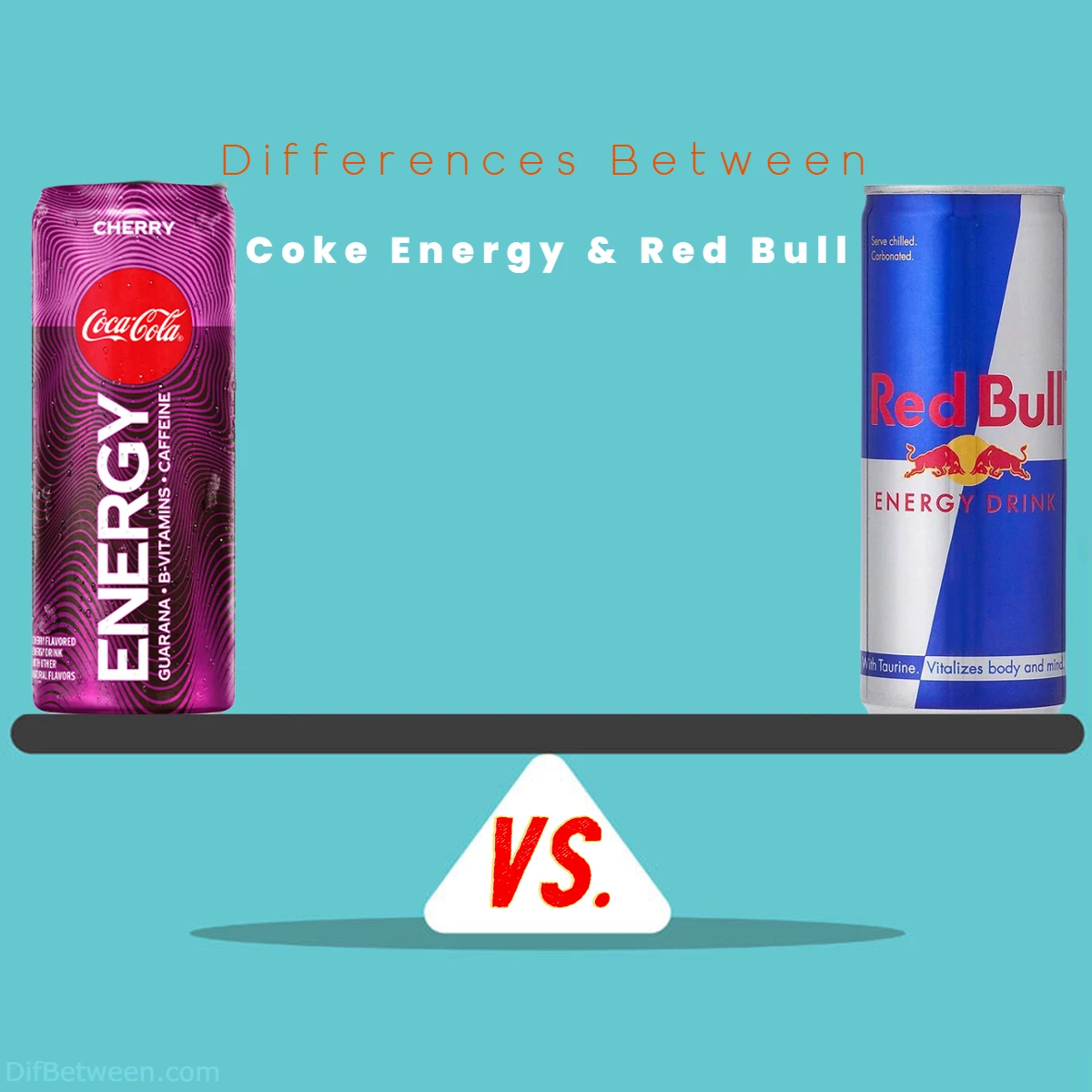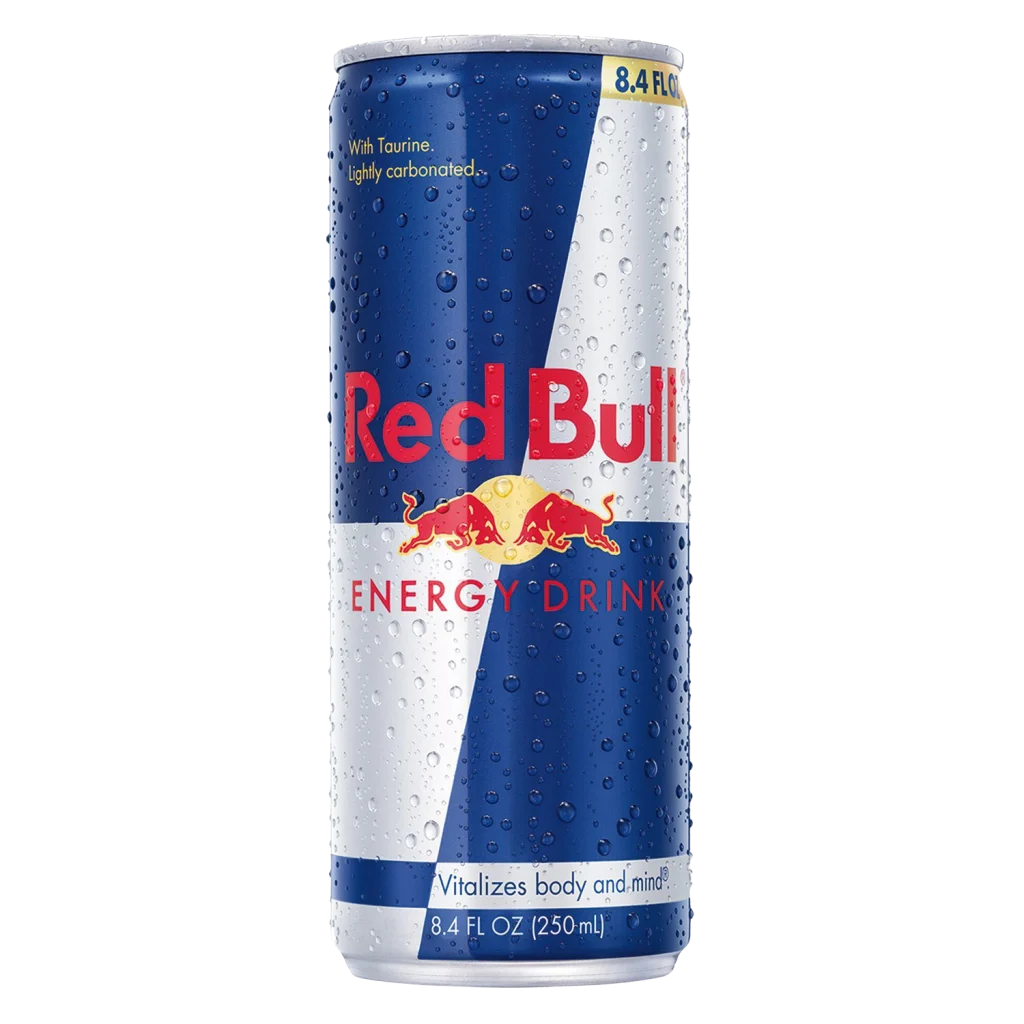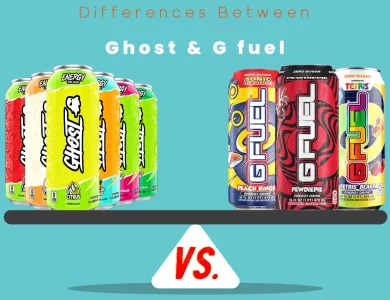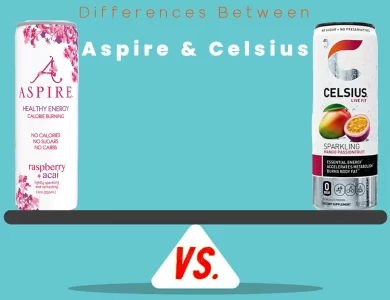
| Aspect | Coke Energy Drink | Red Bull |
|---|---|---|
| Taste and Flavor Selection | Offers a familiar Coca-Cola flavor with a twist. Comes in various flavors, including Cherry and Coffee. | Pioneered a unique, slightly sweet and tangy taste. Expanded flavor repertoire, including Sugar-Free options. |
| Ingredients | Contains caffeine, Guarana Extract, B-Vitamins, Ginseng Extract, Carnitine, Inositol, and HFCS. | Contains caffeine, Taurine, B-Vitamins, and sugars (sucrose and glucose). |
| Caffeine Content | Approximately 114-118 mg per 12 fl oz (355 ml) serving. | Approximately 80 mg per 8.4 fl oz (250 ml) serving. |
| Nutritional Values | Calories: Around 140 per 12 fl oz (355 ml) serving. Carbohydrates: Approximately 39 g per serving. Sugars: Approximately 39 g per serving. Total Fat: 0 g per serving. Sodium: Around 50 mg per serving. | Calories: Approximately 110 per 8.4 fl oz (250 ml) serving. Carbohydrates: Roughly 27 g per serving. Sugars: Approximately 27 g per serving. Total Fat: 0 g per serving. Sodium: Around 100 mg per serving. |
| Target Audience and Brand Image | Targets Coca-Cola enthusiasts seeking an energy boost. Aims at active lifestyles and busy individuals. | Appeals to adventurous individuals and innovation-seekers. Known for sponsoring extreme sports and thrilling events. |
| Packaging and Availability | Classic red and black design, easily available. | Iconic blue and silver cans, widespread global availability. |
| Price | Generally positioned as a premium offering. | Maintains competitive pricing compared to other brands. |
These liquid powerhouses bring distinct flavors, ingredients, and vibes to the table, offering a spirited experience for those seeking an extra kick in their day. But fret not, for we’ve got you covered with an in-depth exploration of the key differences between Coke Energy Drink and Red Bull. From their tantalizing tastes and caffeine content to their nutritional values and brand images, we’ll quench your thirst for knowledge in this friendly and informative face-off. So, let’s dive right in and embark on a thrilling journey through the world of energy drinks! Read to the end of my blog to find your perfect energy companion. Cheers to an energetic and vibrant lifestyle!
Differences Between Coke Energy Drink and Red Bull
Taste and Flavor Selection
Coke Energy Drink: A Twist of Familiarity
When it comes to taste, Coke Energy Drink brings a sense of familiarity to the table. Leveraging the iconic Coca-Cola brand, this energy drink offers a flavor that loyal Coke fans will appreciate. The taste is reminiscent of the classic Coca-Cola, with a slightly more intense and bolder profile to complement the added energy-boosting ingredients. The goal seems to be to create an energy drink that can be easily embraced by those who already enjoy the taste of Coca-Cola products.

In terms of flavor selection, Coke Energy doesn’t fall short. It comes in several variations, catering to diverse palates. From the original Coca-Cola flavor to Cherry, Zero Sugar, and even a Coffee-flavored version, there’s a range of choices for consumers to explore and find their perfect pick.
Red Bull: Pioneering Taste Innovation
Red Bull, on the other hand, took the world by storm with its distinctive taste that marked the beginning of the energy drink craze. The original Red Bull flavor boasts a unique, slightly sweet and tangy taste that sets it apart from traditional soft drinks. Its flavor profile features a blend of fruity and herbal notes that might not appeal to everyone at first sip, but it quickly gained a massive following, becoming synonymous with energy drinks.

Over time, Red Bull has expanded its flavor repertoire to include variations such as Sugar-Free, Tropical Fruits, and even special editions inspired by tropical destinations. Despite the expansion, the original flavor remains the hallmark of the brand, reflecting the innovation and boldness that helped Red Bull cement its position in the energy drink market.
Verdict: When it comes to taste and flavor selection, the choice between Coke Energy and Red Bull largely depends on personal preferences. If you’re a fan of Coca-Cola and seek a familiar flavor with a boost, Coke Energy is likely to be your go-to choice. Alternatively, if you’re after a unique and pioneering taste, Red Bull’s original flavor might just be the energizing experience you crave.
Ingredients and Caffeine Content
Coke Energy Drink: The Fusion of Energy
Coke Energy Drink combines the essence of Coca-Cola with additional energy-enhancing ingredients. While the specific formula may vary slightly between the different variations, let’s take a look at the key ingredients commonly found in Coke Energy:
| Key Ingredients | Function |
|---|---|
| Caffeine | Provides the main energy-boosting effect. |
| Guarana Extract | Adds to the caffeine content for sustained stimulation. |
| B-Vitamins | Supports metabolism and energy production. |
| Ginseng Extract | Traditionally used to combat fatigue and improve focus. |
| Carnitine | Assists in converting fat into energy. |
| Inositol | Aids in maintaining cell health and energy production. |
| High-Fructose Corn Syrup (HFCS) | Provides a source of quick energy. |
Red Bull: The Original Elixir
On the other hand, Red Bull’s success is anchored in its unique blend of ingredients, which includes the following:
| Key Ingredients | Function |
|---|---|
| Caffeine | Provides the main energy-boosting effect. |
| Taurine | Amino acid believed to support physical performance. |
| B-Vitamins | Supports metabolism and energy production. |
| Sugars (Sucrose and Glucose) | Provides a rapid source of energy. |
One notable difference between the two brands is the choice of sweeteners. Coke Energy relies on High-Fructose Corn Syrup (HFCS) for sweetness, while Red Bull uses sucrose and glucose. This difference in sweeteners may be a consideration for individuals with specific dietary preferences or restrictions.
Caffeine Content Comparison
Caffeine is the primary energy-boosting component in both Coke Energy and Red Bull. However, the caffeine content per serving differs between the two drinks:
- Coke Energy Drink typically contains around 114-118 mg of caffeine per 12 fl oz (355 ml) serving.
- Red Bull, on the other hand, contains approximately 80 mg of caffeine per 8.4 fl oz (250 ml) serving.
It’s essential to be mindful of the caffeine content, especially if you are sensitive to caffeine or plan to consume multiple servings throughout the day.
Verdict: In terms of ingredients and caffeine content, both Coke Energy and Red Bull contain similar elements to provide that much-needed boost. However, if you prefer a slightly higher caffeine dose and are intrigued by the inclusion of Guarana Extract and Ginseng, Coke Energy could be your preference. On the other hand, if you appreciate the original formula that pioneered the energy drink industry, Red Bull might be your everlasting favorite.
Nutritional Values and Calories
Coke Energy Drink: Finding the Balance
Coke Energy Drink aims to strike a balance between an energy-boosting beverage and a refreshing treat. Let’s examine the typical nutritional values per 12 fl oz (355 ml) serving of Coke Energy:
| Nutritional Values | Per 12 fl oz (355 ml) Serving |
|---|---|
| Calories | Around 140 |
| Total Carbohydrates | Approximately 39 g |
| Sugars | Roughly 39 g |
| Total Fat | 0 g |
| Sodium | Around 50 mg |
Notably, Coke Energy contains 0 grams of fat, which is advantageous for those watching their fat intake. However, it is worth being mindful of the sugar content, especially for those monitoring their sugar consumption.
Red Bull: A Lighter Option
Red Bull is often regarded as a lighter and more calorie-friendly option among energy drinks. Here are the typical nutritional values per 8.4 fl oz (250 ml) serving of Red Bull:
| Nutritional Values | Per 8.4 fl oz (250 ml) Serving |
|---|---|
| Calories | Approximately 110 |
| Total Carbohydrates | Roughly 27 g |
| Sugars | Approximately 27 g |
| Total Fat | 0 g |
| Sodium | Around 100 mg |
In comparison to Coke Energy, Red Bull contains slightly fewer calories and carbohydrates per serving. The sugar content is also on par with that of Coke Energy.
Verdict: If you’re watching your calorie intake or prefer a lighter option, Red Bull might be the preferred choice, as it contains fewer calories and carbohydrates per serving. However, if you don’t mind a few extra calories and desire a.
unique taste with a touch of the classic Coca-Cola flavor, Coke Energy might be the go-to option for you.
Target Audience and Brand Image
Coke Energy Drink: Bridging Familiarity and Energy
Coke Energy’s strategic advantage lies in its ability to tap into the vast consumer base of the Coca-Cola brand. By leveraging the familiarity and trust associated with Coca-Cola, Coke Energy can reach a broad audience of individuals looking for an energy boost without straying too far from their preferred taste profile. This makes it particularly appealing to Coke enthusiasts who seek a caffeinated alternative from a brand they already know and love.
Additionally, Coke Energy targets individuals with active lifestyles who need an extra kick to power through their busy days or enjoy their favorite activities without feeling weighed down by excessive calories or an overwhelming energy drink taste. Its various flavor options cater to different tastes and preferences, making it accessible to a wider range of consumers.
Red Bull: Empowering Adventurers and Innovators
Red Bull’s brand image has become synonymous with adventure, extreme sports, and pushing the limits. From sponsoring thrilling sporting events to supporting adrenaline-inducing stunts, Red Bull has positioned itself as the drink of choice for those seeking excitement and energy to fuel their passions.
The brand’s marketing efforts have heavily focused on fostering a sense of daring and innovation, appealing to a young and adventurous demographic. Red Bull has successfully built a loyal community of consumers who resonate with the brand’s values and lifestyle, creating a powerful brand identity that extends beyond the beverage itself.
Brand Image Comparison
The choice between Coke Energy and Red Bull can come down to the brand image and the lifestyle that aligns with your personal values. If you identify with the adventurous and boundary-pushing spirit of Red Bull, you might find yourself reaching for their iconic blue and silver cans more often. On the other hand, if you seek a familiar taste with a boost of energy and appreciate the well-established Coca-Cola brand, Coke Energy might be the energizing companion you’ve been looking for.
Packaging and Availability
Coke Energy Drink: Packaging with a Classic Touch
As an extension of the Coca-Cola brand, Coke Energy retains the classic red and black color scheme that Coca-Cola fans are familiar with. The packaging design is sleek, featuring the iconic Coca-Cola logo along with the “Energy” label to distinguish it from the regular soft drinks. The slim cans are easy to carry and fit comfortably in most cup holders, making them convenient for on-the-go consumption.
Coke Energy is widely available in various retail locations, including grocery stores, convenience stores, and online platforms. Its strong association with Coca-Cola ensures that it is often prominently displayed alongside other Coca-Cola products, making it easily recognizable and accessible to consumers.
Red Bull: Iconic and Bold Packaging
Red Bull’s packaging is undoubtedly iconic, featuring the brand’s distinctive blue and silver cans. The recognizable twin bulls charging at each other emblem further adds to the brand’s unique and memorable identity. The slim and tall cans are designed for easy grip and portability, making them a popular choice for those who lead active lifestyles.
As one of the pioneers of the energy drink industry, Red Bull has established a global presence and wide distribution network. You can find Red Bull in various convenience stores, gas stations, supermarkets, and entertainment venues. Additionally, Red Bull’s popularity and brand recognition have also paved the way for its availability in many countries worldwide.
Packaging and Availability Comparison
Both Coke Energy and Red Bull boast sleek and convenient packaging, making them easy to carry and consume on the go. The choice between the two may come down to personal preferences regarding the packaging design and branding that resonates with you.
In terms of availability, Red Bull has a more extensive global presence due to its pioneering status and extensive marketing efforts over the years. However, Coke Energy’s association with the well-known Coca-Cola brand grants it broad availability as well, making it accessible to a significant number of consumers.
Price Comparison
When comparing energy drinks, the price can be a crucial factor for many consumers, especially for those who regularly incorporate them into their routines.
Coke Energy Drink: A Premium Offering
Coke Energy is often positioned as a premium energy drink, which is reflected in its pricing. As an extension of the Coca-Cola brand, consumers can expect to pay a slightly higher price compared to other mainstream energy drinks. The cost may vary depending on the region and retail location, but generally, Coke Energy tends to be on the higher end of the price spectrum.
Red Bull: Competitive Pricing
Red Bull, despite being one of the pioneering energy drink brands, has managed to maintain competitive pricing. While it might not be the most affordable energy drink on the market, its price point generally falls within the range of other popular energy drink brands.
It’s worth noting that Red Bull often offers multi-pack options, which can provide better value for consumers who regularly purchase the drink in bulk.
Price Comparison Verdict
If budget is a significant consideration, Red Bull might be the more economical choice. However, if you are willing to invest a bit more for the taste and brand association with Coca-Cola, then Coke Energy might still be a worthwhile option.

Coke Energy or Red Bull: Which One is for You?
In this friendly and insightful comparison between Coke Energy Drink and Red Bull, we’ve explored the key differences between these two popular energy drink contenders. Ultimately, the choice between the two depends on your personal preferences, taste, dietary considerations, and lifestyle.
Choose Coke Energy Drink if:
- You are a Coca-Cola enthusiast and seek a familiar taste with an added energy boost.
- You prefer a range of flavor options, including classic Coca-Cola, Cherry, Zero Sugar, and Coffee-flavored versions.
- You are looking for an energy drink with added B-vitamins, Guarana Extract, Ginseng Extract, and Carnitine.
Choose Red Bull if:
- You enjoy the original Red Bull flavor with its unique and pioneering taste in the energy drink industry.
- You identify with the brand’s adventurous and daring image, making it your companion in active and exciting pursuits.
- You prefer a slightly lighter and more calorie-friendly option among energy drinks.
Ultimately, both Coke Energy and Red Bull have established themselves as dominant players in the energy drink market, each offering its distinct features and brand appeal. Whichever you choose, remember to enjoy them responsibly and in moderation, savoring the energy-boosting experience they offer on your journey to a vibrant and energetic lifestyle. Cheers to finding your perfect energy companion!
FAQs
The primary difference lies in their flavors and brand associations. Coke Energy Drink offers a twist on the classic Coca-Cola taste, appealing to Coke enthusiasts seeking an energy boost. Red Bull, on the other hand, pioneered a unique, slightly sweet, and tangy flavor that has become iconic in the energy drink industry.
Yes, they do. Coke Energy contains caffeine, Guarana Extract, B-Vitamins, Ginseng Extract, Carnitine, Inositol, and High-Fructose Corn Syrup (HFCS). Meanwhile, Red Bull includes caffeine, Taurine, B-Vitamins, and sugars (sucrose and glucose). Both offer a caffeine kick, but their additional ingredients differ.
Coke Energy Drink typically contains around 114-118 mg of caffeine per 12 fl oz (355 ml) serving, while Red Bull has approximately 80 mg per 8.4 fl oz (250 ml) serving. Coke Energy offers a slightly higher caffeine dose.
Red Bull is generally considered a lighter option with approximately 110 calories per 8.4 fl oz (250 ml) serving. In comparison, Coke Energy contains around 140 calories per 12 fl oz (355 ml) serving.
Yes, indeed. Coke Energy aims to cater to Coca-Cola enthusiasts and those with active lifestyles, offering a familiar taste with an added energy boost. On the other hand, Red Bull has established a brand identity centered around adventure, extreme sports, and innovation, appealing to thrill-seekers and the young-at-heart.
Both Coke Energy and Red Bull are widely available in various retail locations, including grocery stores, convenience stores, gas stations, and online platforms. Red Bull, being one of the pioneering energy drink brands, has a more extensive global presence.
Read More:
Contents






